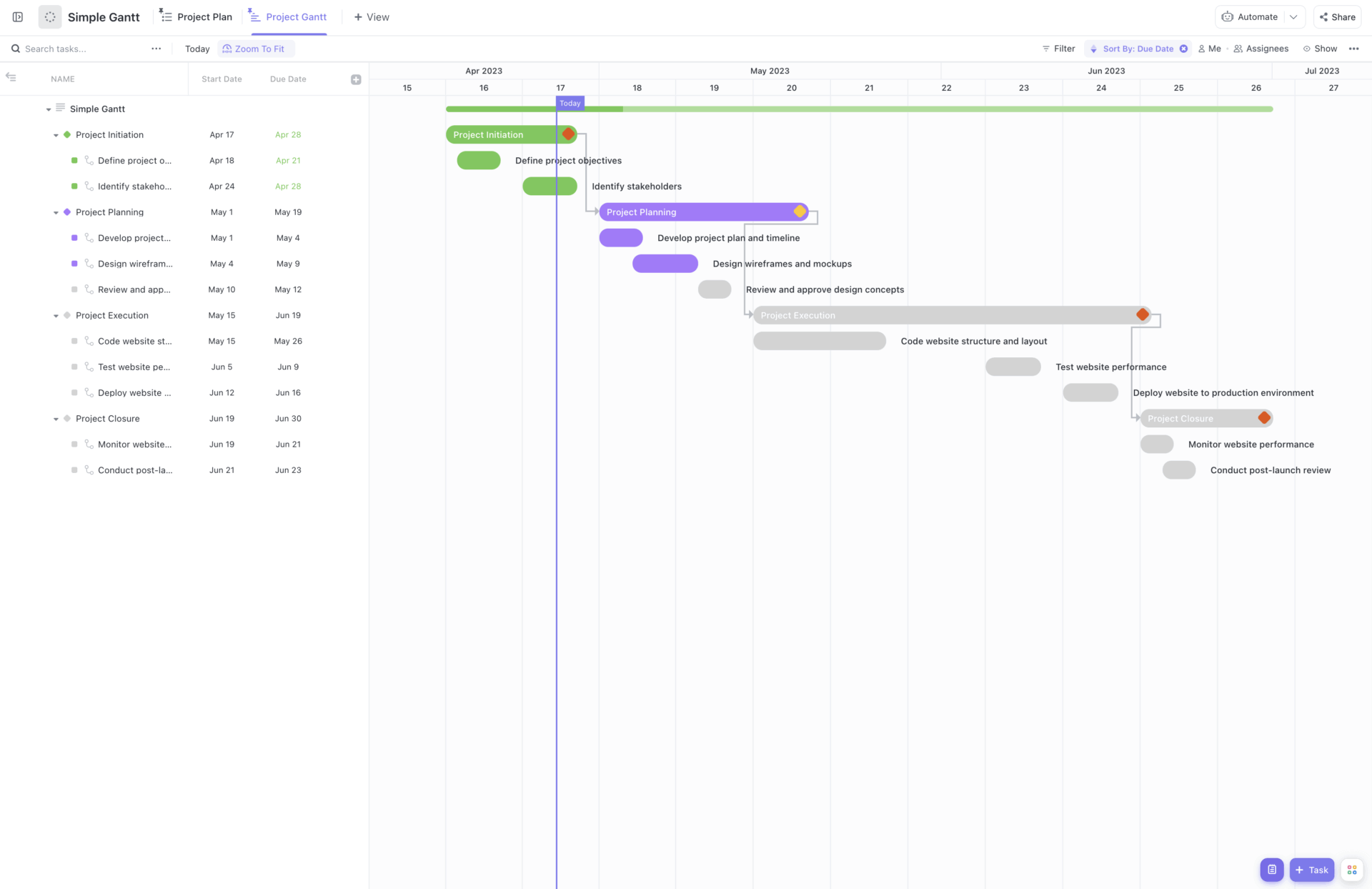Managing your money can feel complicated. One expert tells you to aggressively pay off all debt, while another says to invest every spare dollar. It’s hard to know what the right move is for you. What if you could cut through the noise and get straightforward insights based on your own numbers?
This guide shows you how. We’ve developed a series of simple questions-or “prompts” – that turn a tool like ChatGPT into a surprisingly helpful financial assistant. To use them, simply copy the prompt that fits your goal, paste it into the chat, and replace the bracketed placeholders like [Your Age]
Before You Begin: These prompts cover topics like investing, retirement, and long-term wealth growth. These strategies are most effective when you have a solid budget in place.
If you haven’t mastered your monthly income and expenses yet, we highly recommend starting with our foundational guide first. It will help you build the perfect budget plan, which is the bedrock of everything you’ll do here.
➡️ Start with the basics: The Ultimate Guide to Budgeting with ChatGPT
Part 1: Your Financial Foundation
Start here to get a 360-degree view of your financial health, understand core concepts, and set your primary strategy.
1. Get a Complete Financial Health Check-Up
Use this to get a comprehensive analysis of your current financial standing.
- Act as a fiduciary financial advisor. I need a comprehensive analysis of my current financial health. Here is my information:
- Age:
[Your Age] - Annual Pre-Tax Income:
[Your gross income] - Monthly Take-Home Pay:
[Your net income] - Monthly Expenses:
[Your total monthly spending] - Total Savings:
[e.g., '$5,000 in a High-Yield Savings Account'] - Total Investments:
[e.g., '$15,000 in a 401(k)'] - Total Debt:
[e.g., '$150,000 mortgage, $10,000 student loan, $3,000 credit card'] - Primary Financial Goal:
[e.g., 'Retire by 60', 'Buy a house in 5 years', 'Become debt-free']
Based on this, provide a “Financial Health Report.” The report should include my estimated net worth, an analysis of my savings rate and debt-to-income ratio, a grade (from A to F) for my current financial standing, and your top 3 most impactful recommendations for what I should focus on next.
- Age:
2. Calculate and Track Your Net Worth
This prompt helps you calculate the ultimate measure of your financial progress.
- Act as my personal accountant. I want to calculate my net worth. Here is a list of my assets and liabilities:
- Assets:
[List all assets with their estimated value, e.g., 'Home value: $300,000', 'Car value: $15,000', 'Savings account: $10,000', '401(k): $50,000'] - Liabilities:
[List all debts, e.g., 'Mortgage balance: $220,000', 'Car loan: $8,000', 'Credit card debt: $2,000']
Calculate my current net worth. Provide a simple balance sheet showing the breakdown of my assets and liabilities. Suggest two ways I could increase my net worth over the next year: one by increasing assets and one by decreasing liabilities.
- Assets:
3. Truly Understand Compound Interest
Use this prompt to illustrate the most powerful force in finance.
- Explain the concept of compound interest to me like I’m 15. Use a simple story or analogy to show how it works. Then, create a chart that shows the growth of a ‘$10,000’ initial investment with an additional ‘$500’ contributed monthly, assuming a 7% average annual return, over 10, 20, and 30 years. Highlight the total contributions versus the total growth in each scenario.
Part 2: Optimizing Your Cash Flow & Income
Use these prompts to maximize the money you have available by analyzing spending, boosting income, and minimizing taxes.
4. Analyze Your Detailed Spending Habits
Use this to zoom in on your monthly spending and find opportunities to save.
- Act as a budget analyst. I need to understand where my money is going. Here is a list of my transactions from last month:
[Paste a list of your transactions, or a summary like: 'Groceries: $450, Dining Out: $250, Gas: $150, Shopping: $200, Subscriptions: $50'].Please categorize my spending, identify my top 3 spending categories, and suggest 3 specific, actionable ways I can reduce my spending without drastically changing my lifestyle.
5. Optimize Your Income & Career
This prompt helps you analyze your earnings potential and make smart career decisions.
- Act as a career coach. I am evaluating a new job offer and need to compare it to my current role.
- Current Role: Salary
[Amount], 401k match[Details], Health Insurance Premium[Amount], Annual Bonus[Details]. - New Offer: Salary
[Amount], 401k match[Details], Health Insurance Premium[Amount], Signing Bonus[Amount].
Provide a net financial comparison of these two offers. Factor in taxes, benefits, and bonuses to estimate the total financial impact of each role, and help me make an informed decision.
- Current Role: Salary
6. Identify Potential Tax Savings
Use this prompt to discover common tax deductions and credits you might be missing.
- Act as a tax advisor. Based on my financial profile: Annual Income
[Amount], Filing Status[Single/Married], 401(k) Contributions[Amount], IRA Contributions[Amount], I am a[Renter/Homeowner].Please identify 3 to 5 common tax deductions or credits I might be eligible for. For each one, explain who typically qualifies and what it does. This is for informational purposes only.
Part 3: Debt and Credit Management
Create actionable plans for tackling debt and improving your credit score.
7. Create a Debt Repayment Strategy
Use this prompt to create a specific plan for paying down debt.
- I have the following debts:
[List of debts with amounts, interest rates, and minimum payments]. My goal is to pay them off as efficiently as possible. Explain the “debt snowball” and “debt avalanche” methods. Create a step-by-step repayment plan for both methods based on my specific debts so I can compare them.
8. Create a Credit Score Improvement Plan
This provides an actionable plan to boost your credit score.
- Act as a certified credit counselor. I want to improve my credit score.
- Current Credit Score:
[Your Score, e.g., 650] - Credit Card Debt:
[e.g., '$4,000 balance on a $7,000 total limit'] - Loan Debt:
[e.g., 'Student loans and a car loan, all in good standing'] - Negative Marks:
[e.g., 'One 30-day late payment from 18 months ago']
Create a step-by-step, prioritized action plan for me to raise my credit score. For each step, explain *why* it works and estimate its potential impact (low, medium, or high). Tell me which factors are most important for my score right now.
- Current Credit Score:
Part 4: Growing Your Wealth – Investing
These prompts help you move from saving money to making your money work for you.
9. Understand Your Investment Options (For Beginners)
This prompt explains the building blocks of investing.
- Act as an investment teacher. I am new to investing and want to understand the basics. My risk tolerance is
[e.g., 'low, I'm scared of losing money', 'moderate, I'm okay with some ups and downs', 'high, I want maximum growth'].
Explain the fundamental differences between stocks, bonds, mutual funds, and ETFs in simple terms. Create a sample portfolio allocation (in percentages) that would be appropriate for someone with my risk tolerance and recommend specific types of funds for each category (e.g., “S&P 500 ETF for stocks”).
10. Analyze Your Current Investment Portfolio (For Intermediate/Advanced Users)
Use this to get an objective analysis of your existing investments.
- Act as an expert portfolio manager. I need a detailed analysis of my current investment portfolio.
- My Age:
[Your Age]and Retirement Goal: Age[e.g., 65] - My Risk Tolerance:
[Conservative/Moderate/Aggressive] - My Portfolio Holdings:
[List each holding with its ticker and percentage, e.g., 'VTI: 40%', 'VXUS: 20%', 'BND: 10%', 'AAPL: 15%']
Provide a portfolio review that covers: Asset Allocation (stocks, bonds, cash), Diversification (geographies and sectors), alignment with my risk tolerance, and 2-3 suggestions for rebalancing to better align with my goals.
- My Age:
11. Perform Due Diligence on a Specific Stock
This prompt helps you research a single company like a professional analyst.
- Act as a senior equity research analyst. I am considering an investment in
[Company Name or Stock Ticker, e.g., 'NVIDIA' or 'NVDA'].
Generate a concise “Stock Due Diligence Report” that includes: a business summary, a financial health snapshot (P/E Ratio, Revenue Growth, Debt-to-Equity), key competitive advantages, the top 3 biggest risks, and the current analyst consensus.
Part 5: Planning for Major Life Goals & Protection
Secure your future with prompts focused on life’s biggest financial milestones and safety nets.
12. Choose the Right Retirement Account
This helps you decide where to start saving for retirement.
- Act as a retirement planning specialist. My annual income is
[Amount]and my employer’s 401(k) plan[has no match/offers a 50% match up to 6% of my salary]. Explain the key differences between a Traditional IRA, a Roth IRA, and a 401(k). Based on my information, create a prioritized list of which account(s) I should fund first and explain why.
13. Determine if You’re Ready to Buy a House
This provides a reality check for prospective homebuyers.
- Act as a mortgage advisor and financial planner. I want to know if I am financially ready to buy a house.
- My Location:
[City, State] - My Annual Gross Income:
[Amount] - My Partner’s Annual Gross Income (if applicable):
[Amount] - Total Savings for Down Payment:
[Amount]and Credit Score:[Score] - My Monthly Debts:
[e.g., '$400 car payment']
Provide a detailed analysis including a realistic home price range I can afford, an estimate of total cash needed (down payment, closing costs, emergency fund), an explanation of PMI, and a list of action steps to become a strong mortgage applicant.
- My Location:
14. Plan for College Savings
This prompt is for those planning for a child’s future education costs.
- Act as a college savings specialist. I want to start saving for my child’s education. My child is
[Child's Age]years old and I live in[Your State]. Explain the key differences between a 529 Plan, a Coverdell ESA, and a custodial account (UTMA/UGMA). Based on my situation, which is likely the best option and why?
15. Evaluate Your Insurance Needs
This helps you decide if you need insurance to protect your income and family.
- Act as an independent insurance analyst. Here is my profile:
- Age:
[Age], Occupation:[Job Title], Family Status:[e.g., 'Single', 'Married with 2 young children'], Annual Income:[Amount], Debts:[e.g., 'Mortgage'].
Evaluate my need for both life insurance and long-term disability insurance. Explain what each covers. For life insurance, explain the difference between Term and Whole life and recommend which is more suitable for me.
- Age:
16. Create Your Initial Estate Plan
This helps you understand the essential documents needed to protect your assets and family.
- Act as an estate planning advisor. I am a
[age]-year-old with[e.g., 'a spouse and one child', 'no dependents']and I want to understand the basics of estate planning.
Explain the purpose of these four documents in simple language: a Last Will and Testament, a Living Trust, a Financial Power of Attorney, and an Advance Healthcare Directive. Based on my family situation, explain why having a plan is critical and suggest which one or two documents are most important for me to prioritize.
Part 6: Understanding the Bigger Picture
Translate confusing economic headlines into what they actually mean for your wallet.
17. Understand How Economic Trends Affect Your Money
- Act as an economist. I want to understand the impact of
[a specific economic trend, e.g., 'rising interest rates', 'high inflation', 'a potential recession']on my finances.
Explain this trend in simple terms. Then, detail its likely effect on my investment portfolio, the interest rates on my savings accounts, the cost of borrowing money, and my general cost of living. Finally, suggest one proactive step I could take to financially protect myself in this environment.











